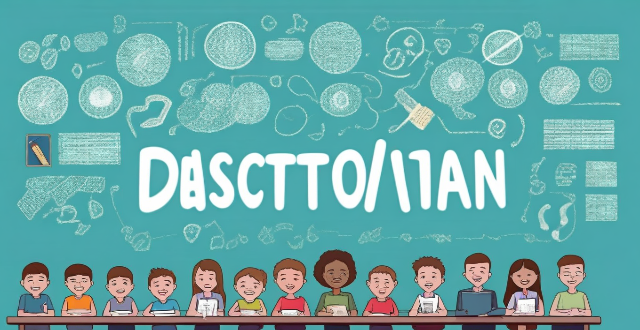This text discusses the importance of collaboration between parents and teachers in addressing behavioral issues in the classroom. It emphasizes the impact of behavior on a student's academic performance, social interactions, and overall well-being, and suggests strategies for effective communication, positive reinforcement, clear expectations, differentiated interventions, and home-school collaboration. The roles and responsibilities of teachers, parents, and students are also outlined, along with challenges and solutions to overcome communication barriers, deal with resistant parties, and address complex behavioral issues. Case studies and examples are provided to illustrate successful interventions and common pitfalls, emphasizing the importance of continuous evaluation and improvement. The conclusion recaps key points and calls for active participation and ongoing support from both parents and teachers to effectively address behavioral issues in the classroom.

Title: How Can Parents and Teachers Work Together to Address Behavioral Issues in the Classroom?
I. Opening Remarks
A. Importance of addressing behavioral issues
- Emphasis on the impact of behavior: Behavioral issues can significantly affect a student's academic performance, social interactions, and overall well-being.
- Need for collaboration: Collaboration between parents and teachers is crucial in identifying and addressing these issues effectively.
B. Purpose of the discussion
- Objective: To explore strategies and methods that parents and teachers can employ together to tackle behavioral challenges in the classroom.
- Expected outcomes: Improved student behavior, enhanced learning environment, and stronger parent-teacher relationships.
II. Strategies for Addressing Behavioral Issues
A. Communication and understanding
- Regular communication: Establish regular channels of communication between parents and teachers to discuss student progress and concerns.
- Mutual understanding: Both parties should strive to understand each other's perspectives and work towards a common goal – the student's well-being.
B. Positive reinforcement and rewards
- Recognize positive behavior: Acknowledge and reward students when they exhibit good behavior, encouraging them to continue doing so.
- Consistency across home and school: Ensure that rewards and consequences are consistent between home and school environments.
C. Clear expectations and consequences
- Set clear expectations: Both parents and teachers should agree on and communicate clear behavioral expectations to the student.
- Consistent consequences: Implement consistent consequences for inappropriate behavior, reinforcing the importance of adhering to the established rules.
D. Differentiated interventions
- Tailored approaches: Recognize that different students may require different interventions based on their unique needs and circumstances.
- Collaborative problem-solving: Work together to find solutions that are tailored to the specific needs of the student exhibiting behavioral issues.
E. Home-school collaboration
- Shared responsibility: Both parents and teachers share the responsibility of fostering positive behavior in students.
- Joint efforts: Coordinate efforts to provide a unified approach to addressing behavioral challenges, ensuring that strategies are implemented consistently at home and at school.
III. Roles and Responsibilities
A. Teachers' roles
- Professional expertise: Leverage their education and training to identify potential underlying causes of behavioral issues.
- Monitoring and reporting: Continuously monitor student behavior and report any significant changes or concerns to parents.
B. Parents' roles
- Support at home: Reinforce the behavioral expectations and consequences established at school within the home environment.
- Active involvement: Actively participate in school activities and meetings to stay informed about their child's progress and challenges.
C. Students' roles
- Self-awareness: Encourage students to be aware of their behavior and its consequences.
- Responsibility: Foster a sense of responsibility in students for improving their own behavior.
IV. Challenges and Solutions
A. Overcoming communication barriers
- Open dialogue: Encourage open and honest dialogue to overcome any misunderstandings or miscommunications.
- Cultural sensitivity: Be aware of and respectful towards cultural differences that may influence communication styles and expectations.
B. Dealing with resistant parents or teachers
- Building trust: Work on building trust through consistent actions and open communication.
- Professional development: Offer opportunities for professional development to enhance understanding and skills related to addressing behavioral issues.
C. Addressing complex behavioral issues
- Seek expert advice: Involve professionals such as counselors or psychologists when dealing with complex or persistent behavioral issues.
- Flexible approaches: Be willing to adjust strategies based on feedback and observed outcomes.
V. Case Studies and Examples
A. Success stories
- Sharing best practices: Share examples of successful interventions to inspire and guide parents and teachers in their collaborative efforts.
- Reflection and learning: Reflect on what made these interventions successful and how they can be replicated or adapted for other students.
B. Common pitfalls and how to avoid them
- Learning from mistakes: Discuss common challenges encountered and strategies to overcome them, helping parents and teachers to avoid similar pitfalls.
- Continuous improvement: Emphasize the importance of continuous evaluation and improvement of collaborative efforts to address behavioral issues effectively.
VI. Conclusion
A. Recap of key points
- Importance of collaboration: Reiterate the importance of parents and teachers working together to address behavioral issues.
- Strategies reviewed: Summarize the strategies discussed for effective collaboration.
B. Call to action
- Encourage active participation: Encourage parents and teachers to actively participate in each other's efforts and to communicate openly.
- Commitment to ongoing support: Urge both parties to commit to providing ongoing support and understanding to foster an environment where behavioral issues can be effectively addressed.